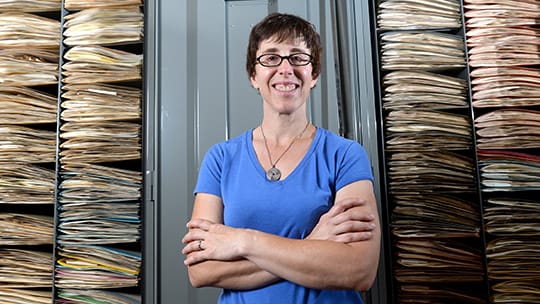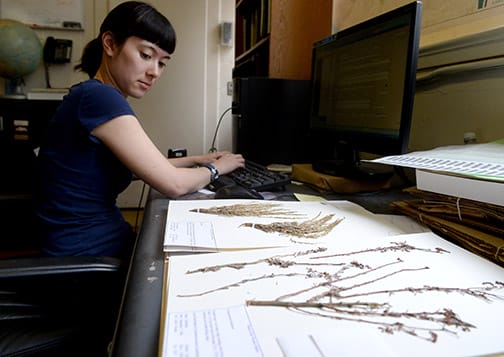Department of Botany Herbarium Offers Bounty for Botanists

The herbarium of the Rancho Santa Ana Botanic Garden (RSABG)—which houses CGU’s Department of Botany—has long been recognized as world class. It not only houses the largest collection of plant specimens from Southern California (with a total number of specimens approaching the 1.2 million mark), but it is a focal point for botanists and research scientists from around the world. This past summer, it reached a major milestone: the completion of a project that included the databasing of nearly half-a-million native California specimens.
The project was made possible by a 2010 grant awarded by the National Science Foundation. In addition to supporting the databasing project, the grant also supports the herbarium’s georeferencing project, a technology that allows researchers to better understand plant distributions of its California specimens.
“By attaching latitude and longitude coordinates to specimen records, we can use the geographic locations of plants to monitor over time how populations may adapt, migrate, or go extinct, as well as to document the appearance of non-native plants in a given geographic region,” said Mare Nazaire, the herbarium’s collection manager.
The RSABG herbarium plays a central role in plant studies the world over. Researchers come to the herbarium and use its specimens to investigate evolutionary relationships, morphology, pollination, taxonomy and systematics, phenology, and many other studies. They also study specimens that can give us insights into how the geographic distributions of plant populations may change over time.
“Some plant populations are disappearing at an alarming rate, especially with the potential of climate change having a real impact,” said Nazaire. “If we don’t know what we have it’s hard to protect that.”
Herbarium staff collects and databases specimens, which they also loan to other research institutions. But RSABG also images some of its specimens—from its Marcus E. Jones collection, for example—and makes them available online, making them more accessible to researchers across the globe. Jones (1852–1934) was a prominent botanist of the American West.
The databasing and georeferencing project in the RSABG Herbarium is part of a larger initiative of the Consortium of California Herbaria (CCH), which includes a database of vascular plants contributed to by 31 herbaria and includes information about nearly two million specimens.
“Our contribution to this project is a component of a larger picture. Researchers can use specimen records from the CCH to examine broad geographic distribution patterns. For example, specimen records can be used to identify a geographic center of species diversity for a given genus,” said Nazaire. “This project creates the opportunity for students, researchers, and the public to access those records.”

And getting the public involved in the herbarium and interested in California flora as a whole is a driving force for both the herbarium and RSABG. Not only does the Garden offer tours, educational outreach, and community events throughout the year, but you can tour and even volunteer at the herbarium itself.
“Our mission is to foster a public appreciation for California native plants and biodiversity, and the herbarium is a key component of that,” said Nazaire.